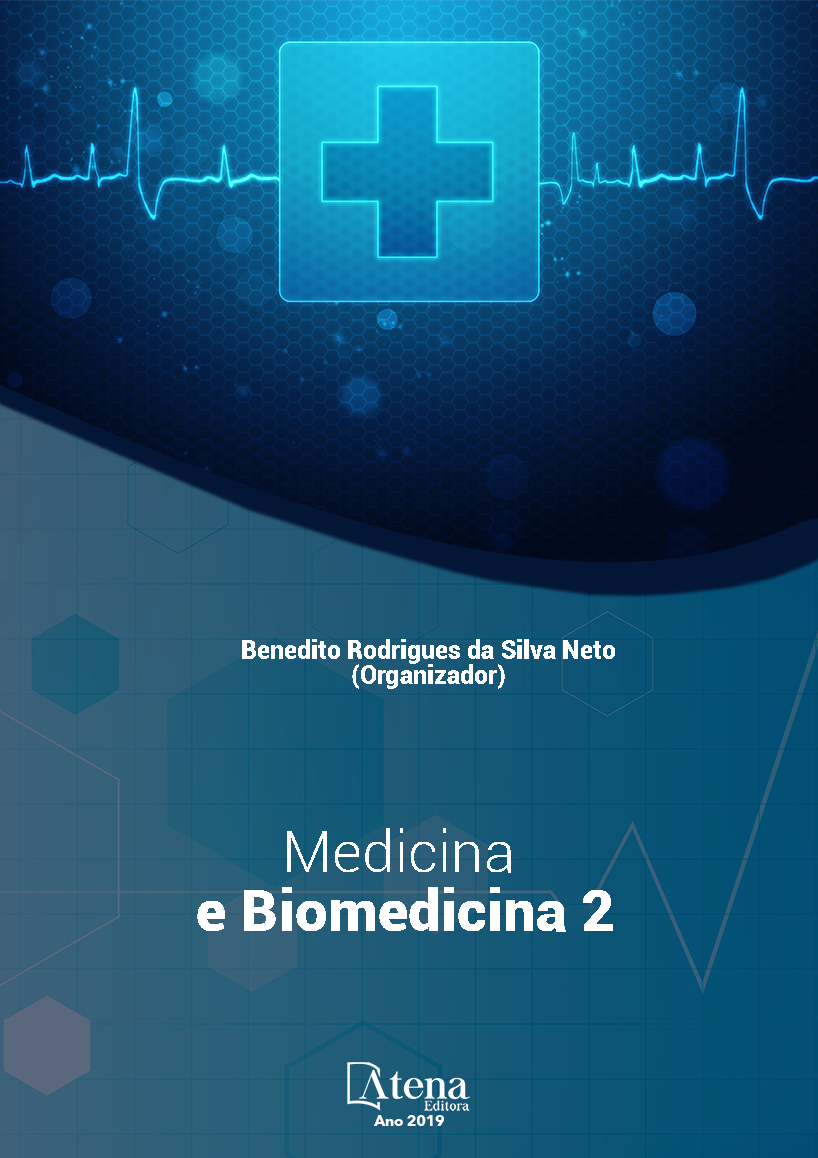
CARACTERIZAÇÃO DAS INFECÇÕES RELACIONADAS À ASSISTÊNCIA À SAÚDE EM UMA UNIDADE DE TERAPIA INTENSIVA PEDIÁTRICA DO EXTREMO NORTE DO BRASIL
Este estudo objetivou caracterizar
infecções relacionadas à assistência à saúde
em uma Unidade de Terapia Intensiva Pediátrica
em Roraima. Trata-se de um estudo transversal,
retrospectivo, quantitativo, realizado através
da base de dados da Comissão de Controle
de Infecção Hospitalar e dos arquivos do
laboratório do Hospital da Criança Santo Antônio
(HCSA), relativo ao período de janeiro de 2015
a junho de 2018. As análises estatísticas foram
realizadas através do Software Microsoft Excel.
A média de permanência foi maior em 2016
(12,3 dias), sendo, porém, o mês com maior
permanência, dezembro de 2017 (22,5 dias).
A invasibilidade foi mais expressiva em 2017
(142), e menos em 2015 (2,6). Os anos de 2015
e 2016 apresentaram a maior taxa de infecção
hospitalar, ambos com 2,8%. O microorganismo
mais incidente foi o gênero Pseudomonas sp.,
sendo de 2016 a 2018, a espécie Pseudomonas
aerugionosa. Ao considerar o tipo de amostra,
percebe-se que em todos anos o material mais
coletado foi a secreção traqueal, excetuando
2017. Observa-se em todos os anos da pesquisa um perfil de resistência comum a
ciprofloxacina. Contudo, o mesmo não acontece com a sensibilidade, que em 2015
é à Ciprofloxacina, em 2016 ao Meropeném, em 2017 à Amicacina, e por fim, no
primeiro semestre 2018, à Piperacilina + Tazobactam. Conclui-se que a taxa de
infecção hospitalar evidenciada na UTI Pediátrica do HCSA encontra-se dentro do valor
aceitável e preconizado pela Organização Mundial de Saúde, contudo evidenciou-se
a deficiência na padronização dos cálculos dos indicadores pela unidade responsável
no hospital.
CARACTERIZAÇÃO DAS INFECÇÕES RELACIONADAS À ASSISTÊNCIA À SAÚDE EM UMA UNIDADE DE TERAPIA INTENSIVA PEDIÁTRICA DO EXTREMO NORTE DO BRASIL
-
DOI: 10.22533/at.ed.9791924073
-
Palavras-chave: Unidade de Terapia Intensiva Pediátrica; Epidemiologia; Infecção hospitalar
-
Keywords: Intensive Care Units, Pediatric; Epidemiology; Hospital Infection
-
Abstract:
This study aimed to characterize infections related to health care in
a Pediatric Intensive Care Unit in Roraima. This is a cross-sectional, retrospective,
quantitative study using the database of the Hospital Infection Control Commission and
the archives of the Hospital of the Santo Antônio Children’s Hospital (HCSA), covering
the period from January 2015 to June 2018. Statistical analyzes were performed using
Microsoft Excel Software. The average stay was higher in 2016 (12.3 days), but the
month with the longest stay, December 2017 (22.5 days). Invasiveness was more
significant in 2017 (142), and less in 2015 (2,6). The years 2015 and 2016 had the
highest rate of hospital infection, both with 2.8%. The most incident microorganism
was the genus Pseudomonas sp., from 2016 to 2018, the species Pseudomonas
aerugionosa. When considering the type of sample, it is noticed that in all years the
most collected material was tracheal secretion, except for 2017. A resistance profile to
ciprofloxacin is observed in all the years of the research. However, the same does not
happen with the sensitivity, which in 2015 is Ciprofloxacin, in 2016 to Meropenem, in
2017 to Amicacin, and finally, in the first half of 2018, to Piperacillin + Tazobactam. It is
concluded that the hospital infection rate evidenced in the Pediatric ICSA of the HCSA
is within the acceptable value and recommended by the World Health Organization,
however the deficiency in the standardization of the calculations of the indicators by the
responsible unit in the hospital was evidenced.
-
Número de páginas: 15
- Bianca Jorge Sequeira
- Leila Braga Ribeiro
- Ana Iara Costa Ferreira
- Fabiana Nakashima
- Wagner do Carmo Costa
- Wallace Bruno Ferreira Garcia
- João Pedro Soares de Macedo
- Lana Akemy Lira Matsubara
- Ayslanne Medeiros de Oliveira
- Andressa Rodrigues Ribeiro
- Naiá Lauria da Silva
- Manuela Mendes Andraos


